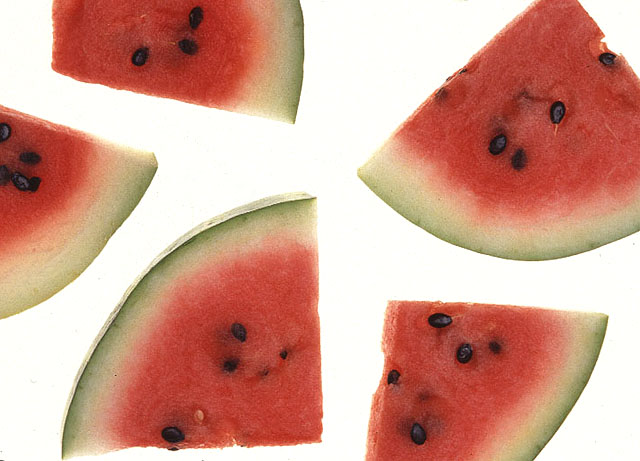Numerous Health Benefits Found in Summer-Favorite Watermelon
Contact: Autumn Canaday
Email: Autumn Canaday
May 27, 2021
No summer barbecue is complete without fresh watermelon. As the nation moves towards the summer grilling season, you may want to consider how watermelon's fruit chemistry can affect your overall health. Researchers in the USDA's Agricultural Research Service (ARS) recently identified over 1,500 small molecules of diverse chemical characters in the fruit, known as phytochemicals. They concluded that eating watermelon is an excellent way to increase your intake of antioxidants, non-protein amino acids and lycopene. This means that every time you eat watermelon, you’ll be improving the health of your cells, organs and nervous system.
The research specifically finds that the antioxidants in watermelon can help your body fight free radicals and slow down cell damage. The fruit's non-protein amino acids will also help to repair your body tissue, break down food from other meals, and even regulate your blood pressure.
"Watermelon could be part of the refreshing and healthy fruit options on your summer picnic table," said USDA-ARS scientist Larry Parnell. "The fruit has gone through many years of evolution, domestication, and selection for desirable qualities—mainly those associated with flesh color, texture and nutrient and sugar content. But our research continues to find that the fruit contains a wide range of nutrients that improve your overall health."
Most Americans purchase the sweet dessert watermelon species, Citrullus lanatus, at their local grocery store or farmer's market. This species is among the most important vegetable crops grown and consumed throughout the world, with over 100 million tons in annual global production. The fruit also has more lycopene than a raw tomato, which is linked to healthy eyes, overall heart health and protection against certain cancers. Other nutrients, like carotenoids, flavonoids, carbohydrates and alkaloids, are also found in the flesh, seed, and rind.
"I worked with Dr. Parnell and the team to develop a pioneering concept of using big data and computational biology to identify and catalog all of the phytochemicals that exist in edible fruit," said ARS researcher Amnon Levi. "The research to identify the metabolic pathways and genome sequence of genes involved in the production of beneficial phytochemicals could be highly useful for plant scientists and breeders aiming to improve nutrient content in fruits and vegetables."
The watermelon's phytochemicals are human-cell-protecting compounds found in fruit, vegetables, grains and beans. All of these nutrients can contribute to your overall health in numerous ways.
Watermelon was introduced to Europe via Moorish Spain in the 10th century. Since then, watermelon has been cultivated successfully in warmer Mediterranean regions before being brought to the Americas by European colonists during the 16th century. Today, watermelon is grown in 44 U.S. states, while major production is centered in California, Florida, Georgia and Texas.
Fruits and vegetables are a part of a healthy, balanced diet, with the recommendation being 1.5 to 2 cups of fruit and 2 to 3 cups of vegetables per day.
The Agricultural Research Service is the U.S. Department of Agriculture's chief scientific in-house research agency. Daily, ARS focuses on solutions to agricultural problems affecting America. Each dollar invested in agricultural research results in $17 of economic impact.

